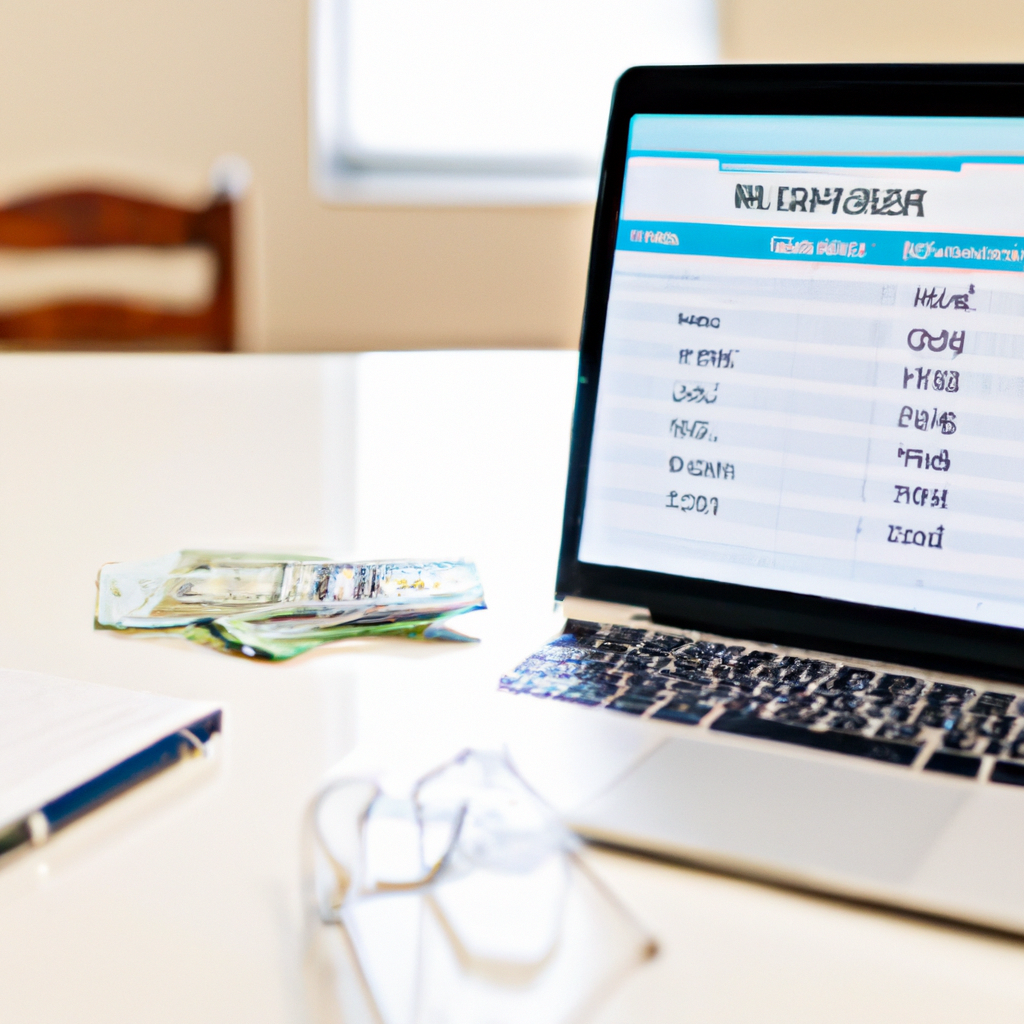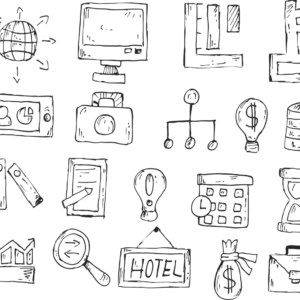Managing your finances effectively is essential for a healthy financial life. One way to stay on top of your income and expenses is by creating a monthly budget. By doing so, you’ll be able to track your earnings, plan your spending, and make more informed financial decisions. Whether you’re looking to save for a particular goal or simply want to have a better understanding of where your money goes, a monthly budget can provide you with the necessary tools to achieve financial stability and peace of mind.
Importance of Creating a Monthly Budget
Having a monthly budget is essential for understanding your financial situation, identifying and managing expenses, and tracking income and savings. It allows you to have a clear picture of where your money is coming from and where it is being spent. By creating a budget, you can take control of your finances and make informed decisions about your spending habits and financial goals.
Understanding your financial situation
Creating a monthly budget starts with understanding your current financial situation. It involves gathering all your financial information, such as bank statements, credit card statements, and bills. This will give you a complete overview of your income, expenses, and debt obligations.
By having a clear understanding of your financial situation, you will be able to make better financial decisions and plan for the future. It helps you identify areas where you can cut back on expenses or find ways to increase your income.
Identifying and managing expenses
One of the key benefits of creating a monthly budget is that it allows you to identify and manage your expenses effectively. It helps you categorize your expenses into essential and discretionary categories and prioritize your spending accordingly.
Essential expenses include things like rent or mortgage payments, utilities, groceries, and transportation costs. These are expenses that you cannot avoid and are necessary for your daily living.
Discretionary expenses, on the other hand, are non-essential and often involve things like dining out, entertainment, and shopping. By tracking these expenses, you can identify areas where you can cut back and save money.
Tracking income and savings
A monthly budget also helps you track your income and savings. It allows you to see how much money is coming in from various sources, such as your job, investments, or side hustles.
Tracking your income enables you to ensure that you are earning enough to cover your expenses and save for your financial goals. It also helps you identify any gaps or areas where you need to increase your income.
Moreover, a budget helps you allocate funds for savings and investments. It allows you to set aside a portion of your income for emergency savings, retirement savings, or other long-term financial goals. By regularly contributing to your savings, you can build a secure financial future for yourself.
Steps to Create a Monthly Budget
Creating a monthly budget can be a straightforward process if you follow a few simple steps. These steps will help you gather financial information, list all sources of income, identify essential and discretionary expenses, and set financial goals and priorities.
Gather financial information
To create a monthly budget, start by gathering all your financial information. This includes bank statements, credit card statements, bills, and any other financial documents. Having these documents readily available will make it easier to track your income and expenses accurately.
List all sources of income
Next, list down all your sources of income. This may include your salary, any side jobs or freelance work, investment income, or rental income. By listing all your income sources, you will have a clear understanding of how much money you have available each month.
List essential and discretionary expenses
Once you have identified your income sources, it’s time to list down your expenses. Start by categorizing them into essential and discretionary expenses.
Essential expenses are the ones you cannot avoid, such as rent or mortgage payments, utilities, groceries, transportation costs, and debt payments. These expenses are necessary for your day-to-day living.
Discretionary expenses are non-essential and include things like dining out, entertainment, shopping, and vacations. These expenses can be adjusted or cut back on if necessary.
Set financial goals and priorities
Lastly, set financial goals and priorities for yourself. Determine what you want to achieve with your money, whether it’s saving for a house, paying off debt, or building an emergency fund. Setting financial goals will help you stay motivated and focused on your budgeting efforts.
By following these steps, you will have a solid foundation for creating your monthly budget. It will serve as a guide throughout the month, helping you make conscious spending decisions and stay on track with your financial goals.

Categorizing and Tracking Expenses
Categorizing and tracking expenses is a crucial part of creating a monthly budget. It allows you to understand where your money is going and make necessary adjustments to your spending habits. Here are the different categories of expenses you should consider:
Fixed expenses
Fixed expenses are recurring expenses that do not vary from month to month. These may include rent or mortgage payments, insurance premiums, car payments, and subscription services. Fixed expenses are predictable and relatively stable, making them easier to budget for.
When categorizing fixed expenses, it’s important to make note of the due dates and amounts so that you can plan your budget accordingly. By knowing how much you need to allocate for fixed expenses, you can ensure that you have enough funds to cover them each month.
Variable expenses
Variable expenses are expenses that can change from month to month. These may include groceries, utilities, transportation costs, and entertainment expenses. Variable expenses can be more difficult to budget for since they can fluctuate depending on your needs and preferences.
To track variable expenses accurately, it is helpful to review your past spending habits. This will give you an estimate of how much you typically spend in each category. Consider creating a budget range for variable expenses, allowing for some flexibility while still keeping your spending in check.
One-time expenses
In addition to fixed and variable expenses, it’s important to account for any one-time or irregular expenses that may arise. These could include things like annual membership fees, car repairs, medical expenses, or holiday gifts.
To budget for one-time expenses, it is helpful to estimate the total cost and divide it by the number of months until it needs to be paid. By setting aside a small amount each month, you can avoid financial stress when these expenses arise.
Savings and investments
Lastly, don’t forget to include savings and investments as a category in your budget. Saving money is essential for building an emergency fund, saving for retirement, or reaching other financial goals.
Make it a priority to contribute a certain percentage of your income to savings or investments each month. By automating this process, you can ensure that you are consistently saving and growing your funds.
Calculating Monthly Income and Expenses
Calculating your monthly income and expenses requires adding up all your income sources and totaling your essential and discretionary expenses. This step is crucial to ensure that your income is sufficient to cover your expenses and allows you to allocate funds for savings. Here’s how you can do it:
Totaling up income sources
Start by adding up all your sources of income for the month. This may include your salary, side jobs, investment income, or any other income streams. Sum up all these amounts to get your total monthly income.
If you have irregular income or freelancing work, it may be helpful to calculate an average monthly income based on your past earnings. This will give you a more stable income figure to work with in your budget.
Summing up essential expenses
Next, calculate the total amount of your essential expenses for the month. This includes rent or mortgage payments, utilities, groceries, transportation costs, and debt payments. Sum up these expenses to determine the minimum amount you need to cover each month.
It’s important to ensure that your total income exceeds your essential expenses. If it doesn’t, you may need to find ways to either increase your income or reduce your expenses.
Budgeting for discretionary expenses
After subtracting essential expenses from your total income, you will have a clearer picture of the funds available for discretionary spending. This includes expenses such as dining out, entertainment, shopping, and vacations.
Decide how much you are comfortable allocating towards discretionary expenses and be mindful of sticking to that budget. This will help you avoid overspending and ensure that you are living within your means.
Allocating funds for savings
Finally, allocate a portion of your income towards savings and investments. Determine the percentage or amount you want to save each month and set it aside before allocating funds for any other expenses.
By prioritizing savings, you are establishing a secure financial future for yourself and allowing your money to grow over time. Be consistent with your savings contributions and make adjustments as your income or expenses change.

Creating a Budget Spreadsheet or Template
Creating a budget spreadsheet or using a template can make the budgeting process more organized and efficient. It allows you to track your income and expenses easily, make adjustments as needed, and visualize your overall financial picture. Here are a few methods to consider:
Using spreadsheet software
Using spreadsheet software like Microsoft Excel or Google Sheets can be a simple yet effective way to create a budget. You can create columns for income, expense categories, and totals, and easily update the amounts as needed.
Spreadsheets allow you to customize your budget based on your unique financial situation and preferences. You can add formulas to automatically calculate totals and make changes easily without starting from scratch.
Online budgeting tools and apps
There are also numerous online budgeting tools and mobile apps available that can simplify the budgeting process. These tools often have pre-built templates and calculators that streamline the budget creation process.
Budgeting apps also offer features like expense tracking, bill reminders, and even automatic categorization of expenses. This can help you stay organized and make budgeting more convenient, especially if you prefer managing your finances on the go.
Customizing a budget template
If you prefer not to start from scratch or use online tools, you can find budget templates online that suit your needs. These templates come in various formats, such as Excel spreadsheets or PDFs, and can be customized to fit your specific income and expense categories.
When customizing a budget template, make sure to include all relevant categories and subcategories that align with your spending habits. This will ensure that you have a comprehensive budget that accurately reflects your financial situation.
Including categories and subcategories
Regardless of the method you choose, it’s important to include categories and subcategories in your budget. Categorizing expenses allows you to track your spending more accurately and identify areas where you can make adjustments.
Common expense categories include housing, transportation, utilities, food, entertainment, debt payments, and savings. Within each category, you can create subcategories to further break down your expenses. For example, within the food category, you can have subcategories like groceries, dining out, and coffee.
By having well-defined categories and subcategories, you can easily track your expenses and monitor how well you are sticking to your budget.
Monitoring and Adjusting the Monthly Budget
Creating a monthly budget is just the first step. To make it effective, you need to continuously monitor and adjust your budget to ensure you are staying on track with your goals. Here are some strategies for monitoring and adjusting your monthly budget:
Tracking and categorizing expenses
Regularly track your expenses and categorize them according to your budget. This can be done using a spreadsheet, budgeting app, or even a simple pen and paper. Make it a habit to record your expenses as soon as possible to prevent forgetting or losing track of them.
Categorizing your expenses will help you identify areas where you may be overspending or not allocating enough funds. It will also give you valuable insights into your spending habits and areas where you can make adjustments.
Comparing actual spending with budgeted amounts
Periodically compare your actual spending with the budgeted amounts. This will help you determine whether you are staying within your budget or if adjustments need to be made. Look for any significant differences and analyze the reasons behind them.
If you consistently find yourself overspending in certain categories, consider revising your budget or finding ways to reduce expenses in that area. On the other hand, if you consistently have extra funds left over, you may be able to reallocate those funds towards savings or other financial goals.
Adjusting budget categories and allocations
Based on your spending patterns and financial goals, adjust your budget categories and allocations as needed. Life circumstances and priorities may change over time, so it’s important to adapt your budget accordingly.
For example, if you decide to prioritize saving for a down payment on a house, you may need to reduce your discretionary spending and allocate more funds towards savings. Be flexible with your budget and make changes that align with your current financial situation and goals.
Reviewing and analyzing spending habits
Regularly reviewing and analyzing your spending habits will help you gain a deeper understanding of your financial behaviors. Look for patterns or triggers that may lead to impulsive or unnecessary spending. This self-awareness will allow you to make conscious decisions about your financial choices and help you stick to your budget.
Consider conducting a monthly or quarterly review of your budget to assess your progress towards your financial goals. Use this opportunity to celebrate your achievements and identify any areas where you can improve.

Addressing Common Budgeting Challenges
Creating and sticking to a monthly budget can come with its own set of challenges. Understanding and addressing these challenges will help you overcome any hurdles in your budgeting journey. Here are some common challenges and strategies for tackling them:
Tackling irregular income
Having irregular income can make budgeting more challenging as it can be difficult to predict how much money you will have each month. To address this challenge, it’s important to establish an emergency fund that can cover your essential expenses during lean months.
Consider averaging your income over a longer period to estimate a stable monthly income figure. This will give you a better idea of how much you can allocate towards your expenses and savings.
Dealing with unexpected expenses
Unexpected expenses can derail even the most well-planned budget. It’s important to have contingency funds set aside for emergencies such as car repairs, medical bills, or home repairs.
By prioritizing savings and building an emergency fund, you can have peace of mind knowing that you are financially prepared for unexpected expenses. Look for opportunities to cut back on discretionary spending to increase your savings rate.
Overcoming budgeting barriers
Sometimes, sticking to a budget can be challenging due to various barriers such as peer pressure, impulsive spending, or difficulty in tracking expenses. To overcome these barriers, it’s important to focus on your financial goals and stay motivated.
Find ways to hold yourself accountable, such as sharing your budgeting journey with a trusted friend or family member. Consider using visual reminders of your goals, like a vision board or savings tracker.
Seeking professional advice
If you find it difficult to create or stick to a budget, seeking professional advice can be beneficial. Financial advisors or credit counselors can provide guidance and help you create a personalized budget that caters to your unique financial situation.
Professionals can also assist in developing strategies for managing debt, increasing income, or investing for the future. Their expertise and experience can provide valuable insights and support as you navigate your financial journey.
Benefits of Having a Monthly Budget
Having a monthly budget offers numerous benefits that can significantly improve your financial well-being. Here are some key advantages of creating and following a budget:
Enhanced financial awareness
Creating a monthly budget increases your financial awareness and understanding. It allows you to see the big picture of your financial situation and helps you make proactive decisions about your money. With a budget in place, you have a clear overview of your income, expenses, and savings, allowing you to take control of your financial future.
Control over spending
A budget gives you control over your spending habits. It helps you prioritize your expenses and make intentional choices about where your money goes. By tracking your expenses and sticking to your budget, you can avoid impulsive purchases and unnecessary debt.
Ability to prioritize and save
A budget helps you prioritize your financial goals. By allocating funds towards savings and investments, you can work towards building wealth and securing your future. Whether you are saving for a down payment on a house, paying off debt, or planning for retirement, a budget allows you to make steady progress towards your goals.
Reduced financial stress
Having a monthly budget reduces financial stress and anxiety. With a clear plan in place, you can have peace of mind knowing that you are in control of your finances. By tracking your expenses and staying within your budget, you can avoid living paycheck to paycheck and gradually build financial stability.

Tips for Sticking to a Monthly Budget
Creating a budget is one thing, but sticking to it can be another challenge. Here are some tips to help you stay on track with your monthly budget:
Track expenses regularly
Make it a habit to track your expenses regularly. Set aside time each week or month to review your spending and ensure that you are staying within your budget. This will help you catch any overspending early on and make adjustments as needed.
Automate bill payments
Set up automatic bill payments to ensure that your essential expenses are paid on time. This will help you avoid late fees and keep your budget on track. Automating bill payments also eliminates the chance of forgetting to make payments and allows you to focus on other aspects of your financial plan.
Use cash envelopes for discretionary spending
Consider using the cash envelope system for discretionary spending categories like dining out or entertainment. Allocate a specific amount of cash for each category and use only that cash for your expenses. This helps you visually see how much money you have left for discretionary spending and prevents overspending.
Involve family members in budget discussions
If you have a family or share expenses with others, it’s important to involve them in budget discussions. Communicate your financial goals and priorities and seek their input. By involving family members, you create a sense of shared responsibility and increase the chances of sticking to your budget.
Conclusion
Creating a monthly budget is a powerful tool for financial responsibility and empowerment. It helps you understand your financial situation, manage your expenses effectively, track your income and savings, and achieve your financial goals.
By following the steps outlined in this article and using the tips provided, you can create a comprehensive budget that aligns with your financial needs and aspirations. Stick to your budget, monitor your progress, and make adjustments as needed. With time and practice, budgeting will become a natural part of your financial routine, leading to continual improvement in your personal finance and creating a secure financial future.


